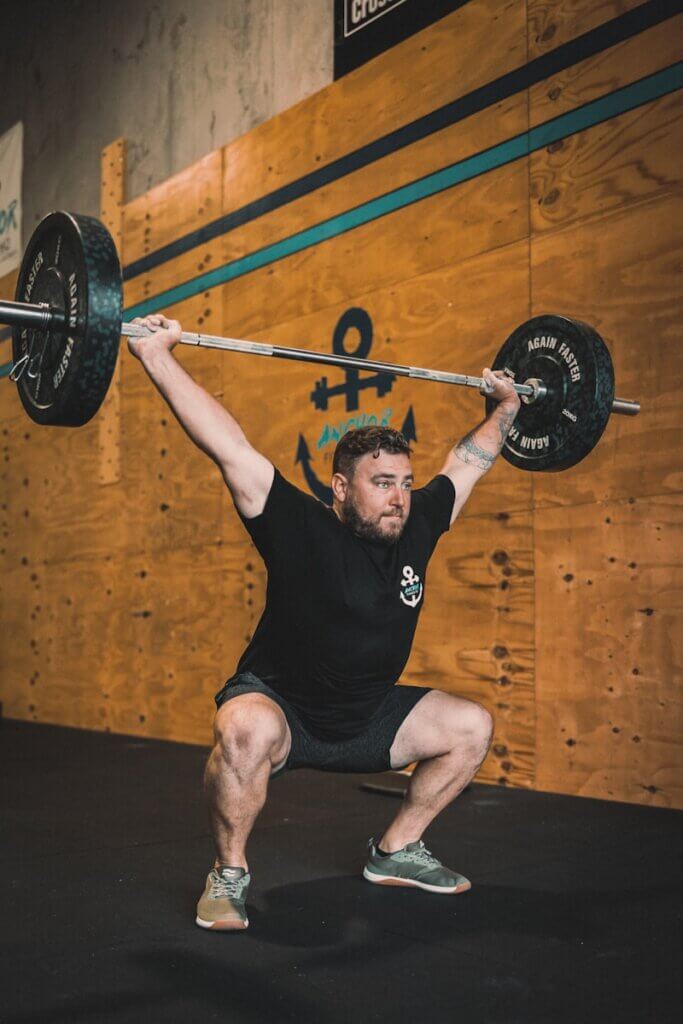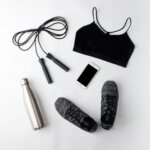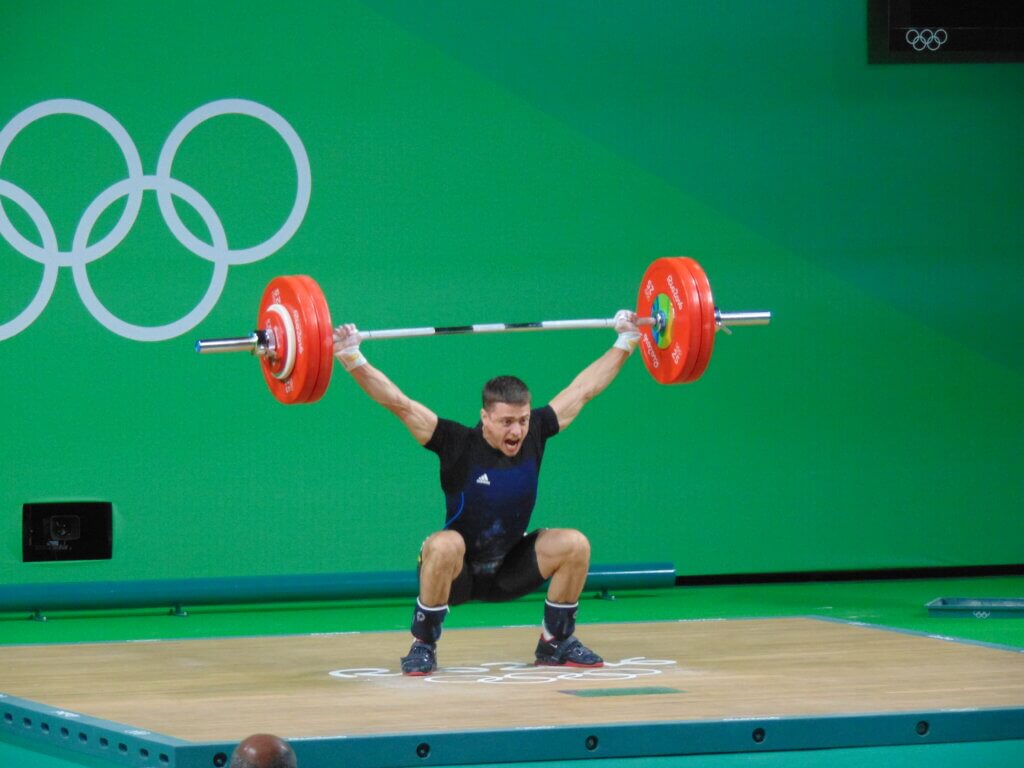How to Muscle Snatch
To perform a muscle snatch, begin by setting up in the proper snatch starting position. With a barbell on a platform, initiate the lift by driving the bar upwards, extending your knees and hips fully. As you reach full extension, instead of performing the second pull and turnover typical in a snatch, focus on driving your elbows vertically. Continue to pull the bar upwards, keeping it as close to your body as possible throughout the movement.

Introduction:
The muscle snatch is a dynamic Olympic weightlifting movement that combines elements of the snatch and the overhead press, resulting in a powerful and explosive lift. While it requires technical proficiency and strength, mastering the muscle snatch can significantly improve your athleticism, strength, and overall performance in CrossFit and weightlifting. In this comprehensive guide, we’ll break down the mechanics of the muscle snatch, provide step-by-step instructions, essential equipment, scaling options, common mistakes to avoid, and the benefits of incorporating this challenging exercise into your training routine.
Steps in the Muscle Snatch movement
- Starting Position: Begin with your feet hip-width apart and the barbell on the ground in front of you. Grip the barbell with a wide snatch grip, palms facing down.
- First Pull: With your back straight and chest up, lift the barbell off the ground by extending your knees and hips. Keep the barbell close to your body as you lift.
- Second Pull: Once the barbell passes your knees, explode upwards by extending your hips, knees, and ankles simultaneously. Shrug your shoulders and pull the barbell upwards with your arms.
- Muscle Snatch: As the barbell reaches maximum height, quickly pull yourself under the barbell by driving your elbows high and flipping your wrists. Catch the barbell overhead in a locked-out position with arms fully extended.
- Overhead Position: Stand tall with the barbell overhead, elbows locked, and shoulders stable. Your feet should be in line with your hips, and your core engaged to maintain balance.
- Return to Starting Position: Lower the barbell back to the ground under control by reversing the movement, returning to the starting position with each repetition.
What Equipment is needed
- Barbell: A standard Olympic barbell is ideal for performing power snatches.
- Weight Plates: Bumper plates are recommended for their durability and safety.
- Lifting Shoes: These provide stability and support during the lift.
- Chalk: Optional, but helps improve grip.
Check out the Equipment subsite for more tools, tips, and inspiration.

Shop Fitness gear now on Amazon
See Amazons extensive range of workout gear here. (Affiliate Link)
Scaling Options:
To gradually build strength and proficiency, consider the following scaling options:
- Power Snatch: Start by mastering the power snatch, which involves pulling the barbell overhead with a brief pause in the catch position before standing up.
- Lighter Weight: Begin with lighter weights to focus on technique and gradually increase the load as you become more proficient.
Common Mistakes to Avoid:
- Incomplete Extension: Ensure full extension of the hips, knees, and ankles during the second pull to maximize power and height.
- Lack of Speed: Focus on explosiveness and speed during the lift to generate maximum force and momentum.
- Poor Timing: Coordinate the pull under the barbell with the upward momentum to smoothly transition into the catch position.
Benefits of the Movement:
- Power Development: Enhances explosive power in the hips, legs, and upper body, essential for athletic performance in sports and functional fitness.
- Full-Body Strength: Engages multiple muscle groups, including the shoulders, back, core, and legs, for a comprehensive strength-building exercise.
- Technical Proficiency: Improves coordination, timing, and proprioception, crucial for mastering complex Olympic weightlifting movements.

Which Muscles Are Worked:
During this exercise, the following muscle groups are engaged:
- Primary Muscles: Deltoids, trapezius, latissimus dorsi, quadriceps, hamstrings, glutes.
- Secondary Muscles: Forearms, biceps, triceps, abdominals.
Alternative Similar Movements:
If you’re seeking variation or targeting specific muscle groups, consider incorporating these alternative exercises:

Shop Fitness gear now on Amazon
See Amazons extensive range of workout gear here. (Affiliate Link)
Q&A for Muscle Snatch
What Is The Muscle Snatch?
The muscle snatch is an Olympic weightlifting exercise that involves lifting a barbell from the ground to an overhead position in one continuous motion, without squatting under the bar.
How To Properly Muscle Snatch?
To muscle snatch properly, start with a wide grip on the bar, pull the bar close to your body, and extend your hips, knees, and ankles explosively. Finish by catching the bar overhead with your arms fully extended.
Can the Wide Grip Spacing Aggravate My Shoulders When Muscle Snatching?
Yes, if you have limited shoulder mobility or pre-existing shoulder issues, the wide grip can cause discomfort or aggravate your shoulders. Ensure proper warm-up and shoulder mobility exercises before attempting the lift.
How To Do The Hanging Muscle Snatch Technique?
Start from a standing position with the barbell at hip level, then perform the muscle snatch from this “hang” position by using the same explosive hip and shoulder movement as the traditional muscle snatch.
What is the Benefit of The Hanging Muscle Snatch Technique?
The hang muscle snatch helps develop power from the hip extension and reinforces proper pulling technique, which is beneficial for overall snatch performance.
Muscle Snatch Vs. Squat Snatch?
The muscle snatch involves lifting the barbell overhead without dropping into a squat, while the squat snatch includes a full squat under the bar. The muscle snatch focuses more on upper body strength and technique.
How to Grip the Bar for Snatches?
Use a wide grip, typically measured by ensuring the bar rests in the hip crease when standing upright. This allows for optimal leverage and range of motion during the lift.
What Are the CrossFit Rules for Snatch?
In CrossFit, the snatch must be performed in one continuous motion from the ground to overhead, with the athlete demonstrating control at the top before lowering the bar.
When is the Muscle Snatch Good?
The muscle snatch is good for building upper body strength, improving technique, and developing explosive power, making it a valuable addition to any strength and conditioning program.
What Are the Alternative Snatch Variations Except Muscle Snatch?
Alternative snatch variations include the power snatch, squat snatch, hang snatch, and snatch balance, each targeting different aspects of strength, power, and technique.
What is the Most Common Problem When Muscle Snatching?
The most common problem is failing to fully extend the hips, knees, and ankles, which reduces the power and efficiency of the lift. Focusing on proper technique and full extension is crucial.
Conclusion:
Incorporating the muscle snatch into your training regimen can unlock new levels of power, athleticism, and technical proficiency. With dedication, practice, and proper form, you’ll soon master this challenging yet rewarding Olympic weightlifting movement, taking your performance to new heights. So, grab that barbell, visualize success, and let’s unleash the power of the muscle snatch together!

Shop Fitness gear now on Amazon
See Amazons extensive range of workout gear here. (Affiliate Link)


